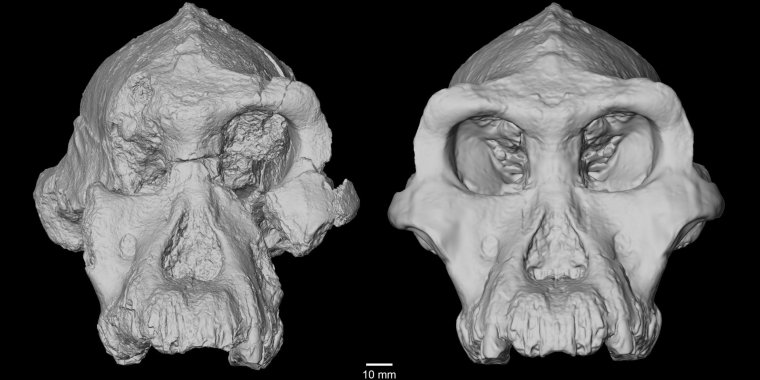| News / Science News |
3.8-million-year-old fossil cranium unveils more about human ancestry
In 2016, researchers working in the Afar region of Ethiopia, some 35 miles away from Hadar, the region in which "Lucy," the famous Australopithecus afarensis human ancestor, was found, discovered a nearly complete cranium of another early human ancestor, Australopithecus anamensis, that dates to 3.8 million years ago.

On left is the original fossil cranium. On right is a full cranial reconstruction. Photo: Timothy M. Ryan/Penn State
According to an international team of researchers, the fossil revealed that the two species coexisted for about 100,000 years rather than at separate time periods as previously thought.
A digital reconstruction of the fossil that facilitated its analysis was initiated at Penn State University. "This is a game changer in our understanding of human evolution during the Pliocene [5.3 million to 2.6 million years ago]," said Yohannes Haile-Selassie, curator, Cleveland Museum of Natural History.
Led by Haile-Selassie, paleoanthropologists conducted extensive analyses, and geologists determined the age and context of the fossil. The cranium "has a mix of primitive and derived facial and cranial features that I didn't expect to see on a single individual," said Haile-Selassie. The completeness of the fossil allowed the team to reconstruct a face.
A relatively complete cranium from the Afar region is a valuable addition to the hominin fossil record, providing another piece in the puzzle for reconstructing hominin adaptation and evolution. (National Science Foundation)
YOU MAY ALSO LIKE





